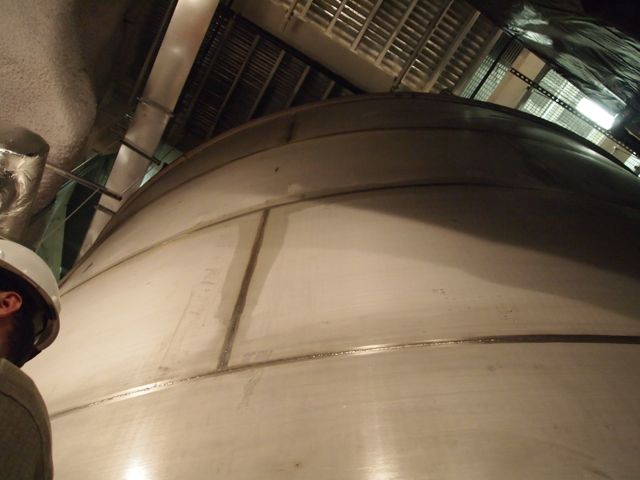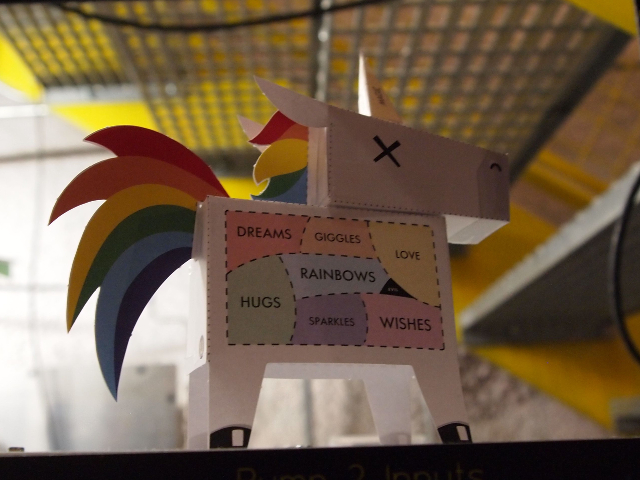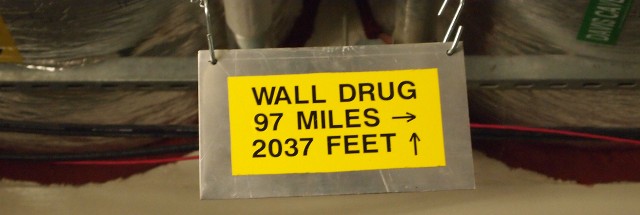Lux-urious —From the archives: In which the author travels to South Dakota to visit a gold mine—housing LUX.
Update, Sept. 6, 2021: It’s Labor Day Weekend in the US, and even though most of us are continuing to call home “the office,” Ars staff is taking a long weekend to rest and relax. And given we can’t travel like we could during Labor Day Weekends past, we thought we’d revisit one of our favorite trips from the archives. This story on our adventure to the Large Underground Xenon (LUX) dark matter experiment in South Dakota originally ran in July 2014, and it appears unchanged below.
One of the quietest, darkest places in the cosmos isn’t out in the depths of space. It’s at the center of a tank of cold liquid xenon in a gold mine deep under the Black Hills of South Dakota. It needs to be that quiet: any stray particles could confuse the detectors lining the outside of the tank. Those detectors are looking for faint, rare signals, ones that could reveal the presence of dark matter.
The whole assembly—the container of liquid and gaseous xenon, the water tank enveloping that, and all the detectors—is called the Large Underground Xenon (LUX) dark matter experiment. So far, LUX hasn’t found anything, but the days of its operation are just beginning: the detector was installed and started operations just last year.
Though still relatively young, LUX has already set many standards for hunting for dark matter particles. When I visited, the facility was gearing up for the next data collection run, one that will involve 300 days of constant operation. The size and sensitivity of the experiment, its designers’ dedication to understanding any noise sources, and the relative simplicity of the detector lead many to hope that if there’s any dark matter to be found, LUX—or its successor—will find it.
(I’ll use “detector” to describe LUX as a whole in addition to the individual photon detectors that are the business-end of the experiment. I hope the context will make it clear which is which.)
That last “if” is a big one, of course. Dark matter is remarkable for its invisibility—it neither absorbs nor emits light of any wavelength. We know about it through its gravitational action, the way it shaped galaxies, organized the largest objects in the Universe, and affected the spectrum of light from the early days of the cosmos. Based on the structure of galaxies, astronomers suspect it is made of particles. But how massive those particles are, how many types might exist, and how they interact are still matters of some conjecture.

The LUX experiment is inside a metal tank containing 71,600 gallons of pure water, so the xenon detector isn’t visible. The head at lower left is LUX researcher Rick Gaitskell.
Matthew R. Francis
If, for example, dark matter doesn’t interact with ordinary matter on any scale our experimental cleverness can currently reach, LUX will turn up nothing, no matter how sophisticated the experiment is.
Rick Gaitskell, one of the principle researchers on LUX, is a professor at Brown University in the United States. (He was born and educated in England, a heritage that came through in his sartorial choice of green flannel three-piece suit with bright red socks.) He told Ars, “I’ve been looking for dark matter for 27 years. We’ve had a number of results over the years where we’ve either ended up seeing nothing or one or two cases we’ve seen something that looked actually rather exciting, in that it showed initially many of the features you might associate with a dark matter interaction.” However, none of those have been confirmed by later experiments—and most now have mundane explanations.
This past frustration is part of what drives Gaitskell. He quit another experiment when he concluded it was likely never to succeed: the detection rate, based on calculations, would likely be less than one dark matter particle per century for each kilogram of detector material. For most detector materials, that implies a prohibitively high cost. If you want to find dark matter on the scale of a year or two, you’d need a detector with masses of several metric tons. But mass is where LUX and its siblings—such as the XENON100 experiment at Gran Sasso in Italy—excel. Using xenon as the detection medium has many advantages, including the ability to build large.
Unicorns, Wall Drug, and dark matter

The lab housing LUX has many small paper unicorns sitting on top of server racks and other equipment.
Matthew R. Francis
To understand how LUX hunts dark matter, I decided to visit the lab and see for myself. It’s not exactly in a location that makes you think of physics.
I arrived in South Dakota during the dying throes of winter; at the end of March, the Black Hills were still snow-covered, but the warmer air carried tantalizing hints of spring. Thankfully, the flights fell between late-season snowfalls, though it snowed enough to cover my rental car during my day underground at LUX. The Black Hills are mountains in miniature, steep rocky peaks topping out lower than the foothills of the grander front range of the Rockies or the Tetons. Nevertheless, they are mountains with all that entails: sudden snowstorms, gates that can close off the roads in the case of severe weather, and “falling rocks” signs everywhere.
LUX is part of the Sanford Underground Research Facility (SURF), housed at the now-defunct Homestake gold mine in the town of Lead. (The irony of a gold mine in Lead vanished quickly. The name is pronounced “leed,” not like the metal.) The whole region cashes in on its Wild West past, especially the adjacent town of Deadwood. Every hotel and gas station has slot machines, and innumerable billboards advertise big payouts at the casinos. South Dakota in general has unrestrictive laws about billboards, as anyone crossing the state by car knows. There are signs for Wall Drug, Mount Rushmore, and various other tourist destinations that nearly dwarf the attractions themselves. Continuing this trend, the lab has its own Wall Drug sign, showing the distance to be 97 miles away horizontally, plus 2037 feet vertically.
By advertising standards, Sanford and LUX are relatively low key. The lab generally isn’t open to the public. To get to it, I had to drive through a residential neighborhood up steep (and at that time of year) snow-packed streets. Because access to the underground portion of the lab requires running the mining elevators—known as “cages”—I had to report at 6am for safety training. Even with jet-lag more or less in my favor, that was still rather early to be functional, though I had it better than the BBC film crew that flew in from the UK.
The safety briefing consisted largely of a video letting us know what we should do if we needed to evacuate the lab. We signed a waiver. We even had to affirm that we would make “intelligent choices,” a seemingly futile thing to ask a bunch of journalists with no mining experience among them. Finally, before descending, we had to don rubber steel-toed boots, coveralls, safety goggles, hard hats with lanterns, and a special emergency breathing apparatus clipped to a heavy utility belt. We made for a sexy-looking crew by the end of the process.
The cages themselves are large enough for about 15 people, with tracks in the floor for the mining carts. They have no built-in lights, so during the 10-minute descent, many of the crew turned on their hard-hat lanterns. (This is not a trip for those with claustrophobia.) Even the motors raising and lowering the cages are vintage: they were built in 1939, and the cable spools are cast iron. The gauges showing the position of the elevators are huge disks with pointers, another delightfully analog touch.
Gaitskell brought an adapted airplane altimeter into our cage to show in real time how far we were descending. Since the top of the mine is roughly a mile above sea-level and the lab is about a mile below ground, we nearly reached the elevation of my home city of Richmond, Virginia. My ears certainly registered the change in air pressure.
However rustic the approach, the lab itself is a typical, sleek modern facility: all shiny pipes, metal stairways, and tile floors. The typical accoutrements of office life abound. There are computers, white boards, water coolers, and (that most necessary piece of lab equipment) espresso machines all underground. University College London PhD student Sally Shaw told me “You kind of forget you’re underground down there.” Additionally, the researchers have adorned the lab with personal touches. A warning sign admonishes visitors to not feed the scientists, and when I looked around, I spotted a few paper unicorns sitting on various shelves. Shaw said the unicorns probably started as a late-night boredom project, but they grew into an inside joke. After all, hunting for dark matter is like looking for unicorns.

